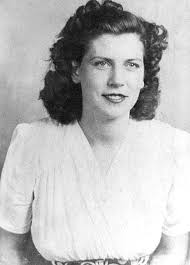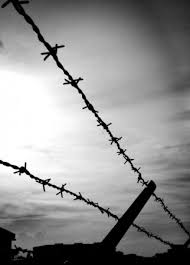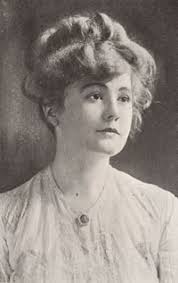13 Little-Known Inventors of Common Things
1. MARGARET KNIGHT - FLAT-BOTTOMED PAPER BAG (1869)

A grade school dropout who lived in Springfield, Mass., Margaret Knight loved mechanical devices and machinery. From 1867 to 1869, she devised the heavy machinery necessary to produce the modern flat-bottomed bag. The practicality of Knight's paper bag was far superior to the existing paper bag, whose origin is unknown. For the paper bag and dozens of other inventions, she received very little compensation. At her death, her estate was valued at a mere $275.05.
2. JOSEPH GLIDDEN - BARBED WIRE (1874)


A resident of De Kalb, Ill., Joseph Glidden took a rudimentary version of barbed wire-first patented by Henry M. Rose-and changed it into a new type that became a commercial success. Glidden's wire, patented in 1874, featured a new way of holding the barbs securely in place. The improved wire allowed cattle ranchers in the Great Plains area to fence off cheaply and effectively large tracts of land. Glidden, who grew up on a farm in New York, disliked traveling and never visited the west, where his invention was most widely used.
3. WILLIAM PAINTER - CROWN BOTTLE CAP (1892)


A Quaker who lived in Baltimore, Maryland, William Painter invented the bottle cap, the machinery to manufacture it, and the method to attach it to bottles. Painter, an engineer, formed the Crown Cork and Seal Company to exploit his invention, which eventually made him a millionaire. Painter's bottle cap was the only one used for decades, until the appearance of the twist-off cap in the 1960s.
4. WHITCOMB L. JUDSON - ZIPPER (1893)


On August 29, 1893, Whitcomb Judson of Chicago patented the zipper-two thin metal chains that could be fastened together by pulling a metal slider up between them. Intended for use on boots and shoes, Judson's zipper was marketed in 1896 as the "universal fastener." However, the zipper as we know it today was designed by a Swedish engineer from Hoboken, N.J., Gideon Sundback. In 1913 Sundback patented his "seperable fastener," the first zipper with identical units mounted on parallel tapes.
5. JACQUES BRANDENBERGER - CELLOPHANE (1908)

As a hobby, aristocratic Swiss chemist and businessman Jacques Brandenberger spent nearly 10 years experimenting with the machinery needed to mass-produce cellophane, a material he had invented. In 1908 he patented the manufacturing process, and three years later he began to sell his product. At first the transparent sheets were expensive and used only as wrapping paper for luxurious gifts. Today cellophane is produced cheaply and is used primarily by the food industries. The enormous success of cellophane enabled Brandenberger to retire comfortably and collect Louis XV antiques.
6. ROSE CECIL O'NEILL - KEWPIE DOLL (1909)


Born in Pennsylvania, Rose O'Neill was educated in convents in Omaha, Nebraska and New York, NY. At age 15 she began looking for work as a magazine illustrator and by age 30 she was earning a sizable income. In December, 1909, the Ladies Home Journal printed one of O'Neill's poems with illustrations about a band of Kewpies (Cupid-like imps with tiny wings and curliques of hair on their foreheads) who stole a wealthy child's Christmas toys. She patented the dolls in 1913 and went on to write and illustrate four successful books that featured Kewpies.
7. GEORGES CLAUDE - NEON SIGN (1910)


French chemist and physicist Georges Claude invented an electric discharge tube containing neon, which resulted in the first neon sign in 1910. In the late 1920s Claude tried, unsuccessfully, to use seawater to generate electricity. During WWII, he believed that Germany would be victorious and collaborated with the Nazis. After the war, Claude was charged with treason, found guilty, and sentenced to life imprisonment.
8. WALLACE HUME CAROTHERS - NYLON (1934)

An extremely emotional, shy and humorless man, Wallace Hume Carothers worked as a research chemist for E.I. Du Pont de Nemours & Company. At Du Pont, Carothers invented the first nylon thread by squeezing a chemical solution through a hypodermic needle in 1934. Originally known as Polymer 66, nylon was first used for stockings and toothbrushes. Depressed over the death of his sister and feeling himself a failure as a scientist, even though he had been elected to the National Academy of Sciences, Carothers committed suicide in 1937. He never realized the full potential of his creation.
9-10. CARLSON MAGEE and GERALD HALE - PARKING METER (1935)

In the late 1920s, Carlson Magee, a newspaperman and member of the Oklahoma City Chamber of Commerce, asked mechanical engineering professor Gerald Hale to devise a timing mechanism to regulate parking. Fascinated with the project, Hale invented the parking meter. In 1935, 150 were installed on streets in Oklahoma City. People disliked the new invention, and when similar meters were put on streets in Mobile, Ala. that same year, a group of concerned citizens chopped them down with axes.
11. SYLVAN GOLDMAN - SHOPPING CART (1937)


Oklahoma City supermarket owner Sylvan Goodman looked at a pair of folding chairs in his office and was inspired to invent the shopping cart. On June 4, 1937, he utilized the first shopping carts in his own Standard Supermarkets. Today there are 30 to 35 million shopping carts in the U.S. and 1.25 million new ones are manufactured each year. Goldman became a millionaire.
12. CHESTER CARLSON - XEROGRAPHIC COPIER (1938)

The son of a Swedish immigrant barber, physicist Chester Carlson invented the dry, or xerographic method of copying in the back room of his mother-in-law's beauty salon in the Queens borough of New York. The patent royalties on the invention, which was bought by the Haloid Company (later Xerox) in 1947, made Carlson a multi-millionaire. His first copier is now on display at the Smithsonian Institution in Washington, D.C.
13. ROBERT ABPLANALP - AEROSOL VALVE (1949)


A 27-year-old mechanical engineer and machine shop owner, Robert Abplanalp revolutionized the aerosol spray can industry in 1949 with his 7-part leakproof valve. Abplanalp started the Precision Valve Corporation to manufacture, market and sell the valve which has since earned him well over $100 million. Every year Precision Valve manufactures one billion aerosol valves in the U.S. and one-half billion in ten foreign countries. Abplanalp, one of ex-president Richard Nixon's closest friends, commented on his success: "Edison said genius was 99% perspiration and 1% inspiration. I say it's 2% inspiration, 8% work and 90% luck. I'm a lucky guy." But the world may not be so lucky. Many scientists believe that the fluorocarbons, which were used in spray cans for almost 30 years, are destroying the earth's protective ozone layer.
1. MARGARET KNIGHT - FLAT-BOTTOMED PAPER BAG (1869)
A grade school dropout who lived in Springfield, Mass., Margaret Knight loved mechanical devices and machinery. From 1867 to 1869, she devised the heavy machinery necessary to produce the modern flat-bottomed bag. The practicality of Knight's paper bag was far superior to the existing paper bag, whose origin is unknown. For the paper bag and dozens of other inventions, she received very little compensation. At her death, her estate was valued at a mere $275.05.
2. JOSEPH GLIDDEN - BARBED WIRE (1874)
A resident of De Kalb, Ill., Joseph Glidden took a rudimentary version of barbed wire-first patented by Henry M. Rose-and changed it into a new type that became a commercial success. Glidden's wire, patented in 1874, featured a new way of holding the barbs securely in place. The improved wire allowed cattle ranchers in the Great Plains area to fence off cheaply and effectively large tracts of land. Glidden, who grew up on a farm in New York, disliked traveling and never visited the west, where his invention was most widely used.
3. WILLIAM PAINTER - CROWN BOTTLE CAP (1892)
A Quaker who lived in Baltimore, Maryland, William Painter invented the bottle cap, the machinery to manufacture it, and the method to attach it to bottles. Painter, an engineer, formed the Crown Cork and Seal Company to exploit his invention, which eventually made him a millionaire. Painter's bottle cap was the only one used for decades, until the appearance of the twist-off cap in the 1960s.
4. WHITCOMB L. JUDSON - ZIPPER (1893)
On August 29, 1893, Whitcomb Judson of Chicago patented the zipper-two thin metal chains that could be fastened together by pulling a metal slider up between them. Intended for use on boots and shoes, Judson's zipper was marketed in 1896 as the "universal fastener." However, the zipper as we know it today was designed by a Swedish engineer from Hoboken, N.J., Gideon Sundback. In 1913 Sundback patented his "seperable fastener," the first zipper with identical units mounted on parallel tapes.
5. JACQUES BRANDENBERGER - CELLOPHANE (1908)
As a hobby, aristocratic Swiss chemist and businessman Jacques Brandenberger spent nearly 10 years experimenting with the machinery needed to mass-produce cellophane, a material he had invented. In 1908 he patented the manufacturing process, and three years later he began to sell his product. At first the transparent sheets were expensive and used only as wrapping paper for luxurious gifts. Today cellophane is produced cheaply and is used primarily by the food industries. The enormous success of cellophane enabled Brandenberger to retire comfortably and collect Louis XV antiques.
6. ROSE CECIL O'NEILL - KEWPIE DOLL (1909)
Born in Pennsylvania, Rose O'Neill was educated in convents in Omaha, Nebraska and New York, NY. At age 15 she began looking for work as a magazine illustrator and by age 30 she was earning a sizable income. In December, 1909, the Ladies Home Journal printed one of O'Neill's poems with illustrations about a band of Kewpies (Cupid-like imps with tiny wings and curliques of hair on their foreheads) who stole a wealthy child's Christmas toys. She patented the dolls in 1913 and went on to write and illustrate four successful books that featured Kewpies.
7. GEORGES CLAUDE - NEON SIGN (1910)
French chemist and physicist Georges Claude invented an electric discharge tube containing neon, which resulted in the first neon sign in 1910. In the late 1920s Claude tried, unsuccessfully, to use seawater to generate electricity. During WWII, he believed that Germany would be victorious and collaborated with the Nazis. After the war, Claude was charged with treason, found guilty, and sentenced to life imprisonment.
8. WALLACE HUME CAROTHERS - NYLON (1934)
An extremely emotional, shy and humorless man, Wallace Hume Carothers worked as a research chemist for E.I. Du Pont de Nemours & Company. At Du Pont, Carothers invented the first nylon thread by squeezing a chemical solution through a hypodermic needle in 1934. Originally known as Polymer 66, nylon was first used for stockings and toothbrushes. Depressed over the death of his sister and feeling himself a failure as a scientist, even though he had been elected to the National Academy of Sciences, Carothers committed suicide in 1937. He never realized the full potential of his creation.
9-10. CARLSON MAGEE and GERALD HALE - PARKING METER (1935)
In the late 1920s, Carlson Magee, a newspaperman and member of the Oklahoma City Chamber of Commerce, asked mechanical engineering professor Gerald Hale to devise a timing mechanism to regulate parking. Fascinated with the project, Hale invented the parking meter. In 1935, 150 were installed on streets in Oklahoma City. People disliked the new invention, and when similar meters were put on streets in Mobile, Ala. that same year, a group of concerned citizens chopped them down with axes.
11. SYLVAN GOLDMAN - SHOPPING CART (1937)
Oklahoma City supermarket owner Sylvan Goodman looked at a pair of folding chairs in his office and was inspired to invent the shopping cart. On June 4, 1937, he utilized the first shopping carts in his own Standard Supermarkets. Today there are 30 to 35 million shopping carts in the U.S. and 1.25 million new ones are manufactured each year. Goldman became a millionaire.
12. CHESTER CARLSON - XEROGRAPHIC COPIER (1938)
The son of a Swedish immigrant barber, physicist Chester Carlson invented the dry, or xerographic method of copying in the back room of his mother-in-law's beauty salon in the Queens borough of New York. The patent royalties on the invention, which was bought by the Haloid Company (later Xerox) in 1947, made Carlson a multi-millionaire. His first copier is now on display at the Smithsonian Institution in Washington, D.C.
13. ROBERT ABPLANALP - AEROSOL VALVE (1949)
A 27-year-old mechanical engineer and machine shop owner, Robert Abplanalp revolutionized the aerosol spray can industry in 1949 with his 7-part leakproof valve. Abplanalp started the Precision Valve Corporation to manufacture, market and sell the valve which has since earned him well over $100 million. Every year Precision Valve manufactures one billion aerosol valves in the U.S. and one-half billion in ten foreign countries. Abplanalp, one of ex-president Richard Nixon's closest friends, commented on his success: "Edison said genius was 99% perspiration and 1% inspiration. I say it's 2% inspiration, 8% work and 90% luck. I'm a lucky guy." But the world may not be so lucky. Many scientists believe that the fluorocarbons, which were used in spray cans for almost 30 years, are destroying the earth's protective ozone layer.





